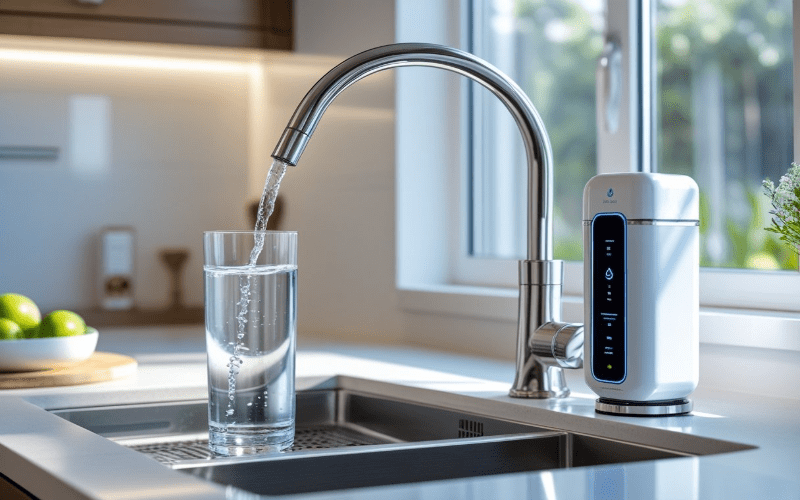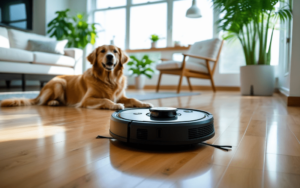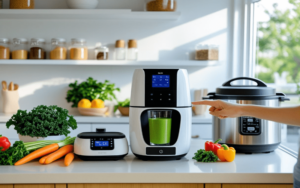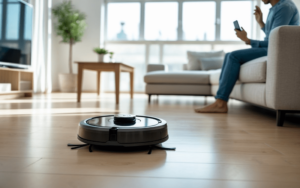Discover 2025’s best smart water filters to boost your home’s drinking water quality. Improve taste, remove contaminants & save money with high-tech filtration.
Clean water matters for every household. Folks are always searching for better ways to make sure their water is actually safe.
Smart water filters use technology to remove more contaminants and give real-time updates about water quality, making them a reliable choice for improving drinking water.
These filters are easy to use and offer clear benefits. They help families feel more confident about their water, which is honestly a big relief.
Please note that this article contains affiliate links. We may earn from qualifying purchases at no extra cost to you.
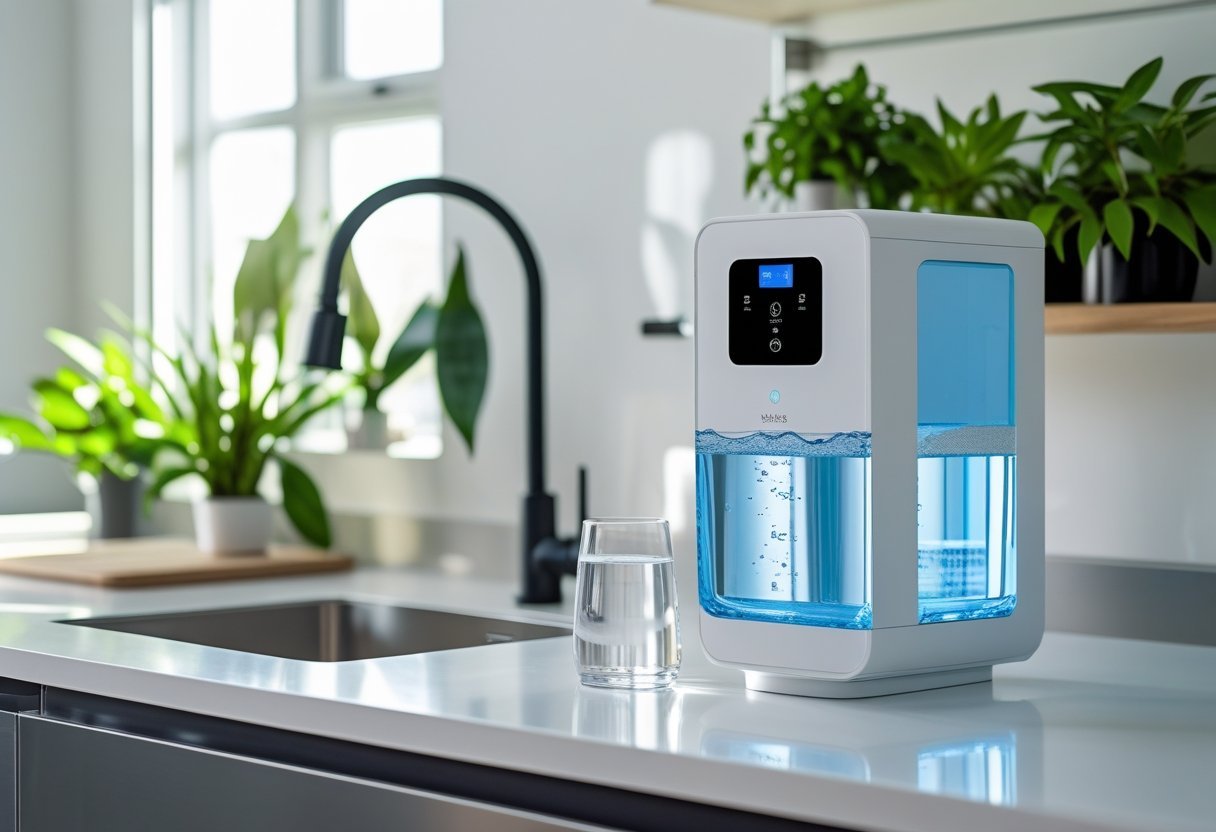
Smart water filters can track filter life, connect to smartphones, and send alerts if something’s off. There are so many options now that just about anyone can find a model to fit their needs and budget.
Some models stand out in 2025 for reliability, easy installation, and strong performance. They provide cleaner water with less hassle than ever before.
Key Takeaways
- Smart water filters remove contaminants and monitor water quality.
- Top models offer features like filter tracking and easy installation.
- Choosing the right filter depends on home needs and technology preferences
- Explore Top selection of Best Smart Water Filters here
Why Use Smart Water Filters?
Smart water filters use modern filtration and smart technology to give families better tasting, safer water. These systems track filter life, send alerts, and improve water’s taste and odor while cutting down on harmful contaminants.
Health Benefits of Improved Water Quality
Drinking water can have unwanted stuff like chlorine, lead, or bacteria. Smart water filters remove most of these and decrease exposure to chemicals you’d rather avoid.
Clean water helps keep your immune system strong and can lower the risk of stomach bugs from microbes lurking in tap water. Kids and older folks, who are more sensitive to poor water quality, probably benefit the most from cleaner, filtered water.
Some smart filters even measure water quality and let you know when it drops. This way, families stay informed about what they’re drinking and can act fast when a filter needs changing. If you want to see what’s out there, check out these smart water filters and their features.
Convenience and Advanced Features
Many smart water filters come with sensors and Wi-Fi or Bluetooth connections. These systems send notifications to your phone if the filter is running low or there’s a leak somewhere.
Some models track water usage and give real-time updates to your devices. You might even get a display or app showing current water quality, filter status, or how much water you’ve used this month.
These features save time and make it easier to keep your system working right. There’s less chance of drinking unfiltered water or forgetting about maintenance. With Internet of Things (IoT) tech, smart filters fit right into modern homes and busy routines.
Cost Savings Over Time
Smart water filters might seem pricey up front, but they can save money in the long run. By cutting down on bottled water, families spend less every month. Plus, fewer bottles means less plastic waste—always a win.
Smart systems alert you before things go wrong, which helps avoid emergency repairs. Tracking filter life also means you’re less likely to use filters past their prime.
Some models even help appliances last longer by removing hard minerals that cause scale build-up. That’s good news for dishwashers and coffee makers. All together, savings on bottled water, repairs, and appliances make smart filters a cost-effective choice. There are even estimates that whole house smart filtration can protect both water quality and your wallet.
We may earn a small commission if you purchase through this link. Thank you for supporting our content!
How Smart Water Filtration Technology Works
Smart water filters use a mix of advanced filtration methods, digital sensors, and smartphone apps to deliver clean, safe tap water. Every part of the system works together to get rid of contaminants and give you more control and info about your water.
Overview of Filtration Methods
Modern smart water filters often use a mix of methods to clean water. These include activated carbon filters, reverse osmosis membranes, sediment filters, and UV sterilization.
Each filter type targets different pollutants. Sediment filters grab sand, rust, and dirt. Activated carbon filters cut chlorine, bad taste, and odors. Reverse osmosis removes dissolved stuff like lead or nitrates. UV light can kill bacteria and viruses.
Most smart filters use several of these stages together. The result? Water that tastes better and is safer to drink. Multiple layers of protection just make sense if you’re worried about what’s in your tap water.
Connected Sensors and Real-Time Monitoring
Smart water filters have sensors that constantly track water quality and filter performance. These sensors watch for changes in water flow, monitor filter usage, and can even test for things like total dissolved solids (TDS).
If the sensors spot a drop in water quality or a filter getting old, you get an automatic alert. No more guessing about maintenance or when it’s time for a change.
Some models show you the health of the system, so you can see data about water purity and filter life at a glance. This ongoing feedback is a big step up from basic filters. Learn more about how smart purifiers use sensors for real-time monitoring.
Mobile App Integration and Control
Most smart water filters connect straight to mobile apps. These apps let you check water quality, schedule filter changes, and get push notifications about your system.
You can view water use patterns, track filter lifespan, and sometimes even order new filters with just a few taps. Some apps allow remote control, so you can turn filtration on or off without being in the room.
Managing clean water gets way easier with this kind of integration. Many brands also offer extra support through their apps, like automatic reminders and detailed water reports. This gives you more confidence that your water is protected. There’s more on integration with apps and smart home tech if you’re curious.
Key Features to Look for in the Best Smart Water Filters
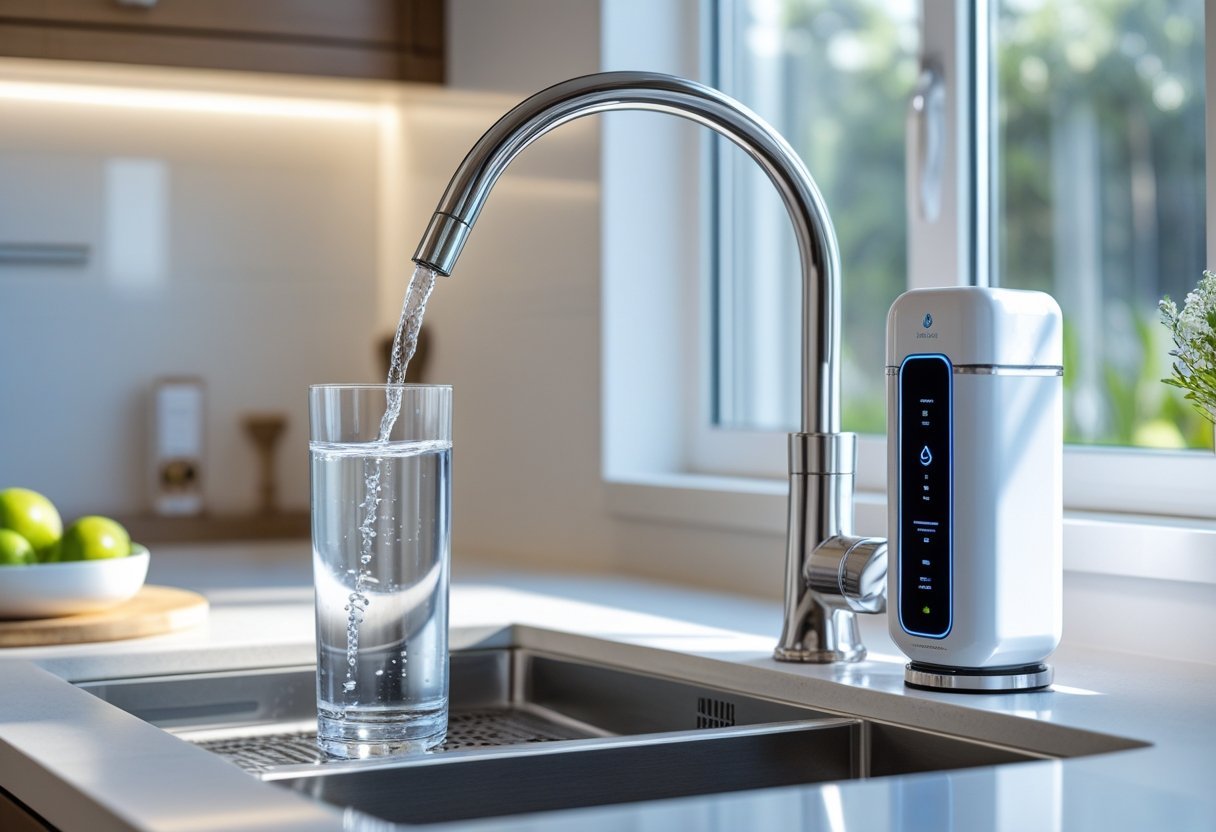
Picking a smart water filter means paying close attention to its main functions and tech. The best ones stand out for cleaning water, giving real-time updates, and making maintenance a breeze.
Explore Top selection of Best Smart Water Filters here
Filtration Performance and Certifications
Filtration performance is key. Look for systems that use multi-stage filtration, like activated carbon, reverse osmosis, or UV filters.
Each step removes different contaminants—lead, chlorine, bacteria, and more. Filters should meet top safety standards, so check for certifications from groups like NSF or WQA.
These marks mean the filter’s actually been tested for removing specific impurities. For example, the Aquasana AQ-5200.62 tackles a wide range of contaminants, including PFOA, PFOS, and common metals, but keeps healthy minerals in the water.
A good filter should also keep water tasting and smelling fresh. Clear certification labels and detailed test info make it easier to trust what you’re buying.
We may earn a small commission if you purchase through this link. Thank you for supporting our content!
Installation and Maintenance
Smart water filters should be easy to install, even if you’ve never set up a filter before. Most modern filters have simple designs, clear instructions, and sometimes even video guides.
Easy maintenance is just as important. Filters with quick-change cartridges let you swap out old filters in minutes, no tools or water shut-off needed.
Some filters need regular cleaning or changing out multiple parts. Systems with fewer pieces or longer-lasting cartridges make upkeep faster and cheaper.
Smart models usually send reminders or track filter replacement, so you don’t forget. Always check product manuals or support to make sure you’re comfortable with installation and basic maintenance.
Smart Water Filters Alerts and Reporting
A smart water filter shines by sending real-time alerts and giving regular status updates. You’ll get these through a smartphone app or right on the device.
The best systems warn you when filters need changing or if something’s wrong. Some even monitor water quality and alert you if the water’s not safe to drink.
Good smart filters show detailed reports—how much water was cleaned, filter life left, and any detected issues. That kind of transparency lets you stay in control.
Filters with these features use WiFi or Bluetooth for instant notifications. It’s a lot better than just guessing about filter changes or possible problems.
Explore Top selection of Best Smart Water Filters here
Water Usage Tracking
Water usage tracking is a handy feature for managing both quality and cost. Smart water filters with this record daily and monthly water use.
Tracking can help spot leaks, sudden changes in habits, or weird spikes in use. That gives you the info you need to fix issues early.
Some smart filters show usage data as charts or simple tables, so you can spot trends or set goals to use less water. That can help you save on bills or just waste less.
Usage tracking also helps you know when to replace filters, sometimes even personalizing reminders based on how much water you actually use. Filters with strong tracking tools make for a more efficient and reliable home water system.
Top Rated Smart Water Filter Models in 2025
Smart water filters in 2025 use advanced technology to deliver cleaner, better-tasting water at home. With options for whole-house setups, under-sink units, and countertop models, there’s something out there for just about every homeowner and budget.
Comparison of Popular Brands
Smart water filter brands in 2025 are all about getting rid of lead, chlorine, and microplastics. Brita, Aquasana, and iSpring tend to be the names people trust most.
These filters now come with sensors that track usage, monitor filter life, and sometimes sync with your phone for updates. It’s a little wild how connected everything is getting.
Brita smart pitchers have Bluetooth, so you can check filter status from your phone. The iSpring RCC7 stands out for its efficiency and deep filtration.
People also like ZeroWater’s pitchers because they offer almost reverse osmosis-level filtration—no complicated install required. Here’s a quick table to compare the basics:
| Brand | Filtration Tech | Smart Features | Price Range |
|---|---|---|---|
| Brita | Carbon Filter | App, Bluetooth | $40 – $80 |
| Aquasana | Reverse Osmosis | Filter Alerts, App | $150 – $350 |
| iSpring RCC7 | Reverse Osmosis (5-stage) | Filter Life Indicator | $180 – $220 |
| ZeroWater | Ion Exchange | TDS Meter | $30 – $60 |
If you want deeper dives into these brands and their smart features, check out The Water Nerd or Tech GearLab.
Explore Top selection of Best Smart Water Filters here
Best for Whole House Use
Whole house smart water filters are for families who want every tap covered, not just the kitchen. The best ones use multi-stage filtration and handle large volumes, which is great if you’ve got a big household or use well water.
Some of these units have automatic backwashing, app monitoring, and filter change notifications. Aquasana and SpringWell make solid whole-house options, and their Wi-Fi features give you real-time data on filter health and water flow.
It’s worth checking filter lifespan, grain capacity, and whether the system works with your plumbing. These setups can be pricey at first, but they’re usually worth it for the long-term protection of your appliances. For more side-by-sides, Water Filter Guru is a handy resource.
Best Under-Sink Options
Under-sink smart water filters are everywhere lately, probably because they’re powerful and stay out of sight. They tend to remove more contaminants than pitcher filters and keep tabs on filter life, so you’re not guessing when to change them.
The iSpring RCC7 gets high marks here, especially for its five-stage reverse osmosis. It’s tough on heavy metals and other pollutants.
Some under-sink units have digital displays or Bluetooth, so you’ll know exactly when it’s time for a new filter. Most give you filtered water from a separate faucet and don’t mess with your water pressure, which is nice. If you want to see test results and rankings, Tech GearLab has you covered.
Explore Top selection of Best Smart Water Filters here
Choosing the Right Smart Water Filter for Your Home
Picking a smart water filter for your home isn’t just about grabbing the first one you see. You want clean water, sure, but you also want something that fits your routine and doesn’t surprise you with hidden costs.
Assessing Your Household Water Needs
Think about how much water your family uses and what you’re worried about—hard water, chlorine taste, or maybe something nastier. Water test kits are pretty handy for figuring out what’s actually in your tap.
Some filters are better at blocking sediment or chlorine, while others go after lead, bacteria, or even trace meds. If you’ve got kids or older folks at home, you might want extra protection from germs or heavy metals.
Bigger households usually need a filter with a faster flow rate. Point-of-entry filters clean all the water coming in, while point-of-use types just handle sinks or fridges. Knowing the difference can really help you pick the right fit.
Compatibility with Existing Plumbing
It’s smart to check if the filter will actually fit your plumbing before you buy. Some install right under the sink, others sit on the counter, and a few just snap onto your fridge.
Whole-home systems might need more space and could mean some plumbing tweaks. If you rent or just don’t want to mess with pipes, pitcher and faucet-mount filters are way easier.
Measure under your sink or near water lines before shopping. Look for models that list pipe sizes and connection types. A few filters need pro installation, so keep that in mind if you’re not a DIY fan.
Budget and Long-Term Value
Smart water filters come in all price ranges, from simple pitchers to fancy, high-tech systems. The sticker price isn’t everything—replacement filters, maintenance, and even electricity (for powered models) add up over time.
Check how long the main unit and filters are supposed to last. Some will remind you or track filter life in an app, which is honestly a lifesaver if you’re forgetful.
It’s worth comparing top-rated options for yearly filter costs, efficiency, and warranty. If you’re watching your spending, look for filters with longer-lasting cartridges or bundle deals—they can save you money in the long run.
Installation and Setup Tips
Having the right tools and knowing the steps ahead of time makes installing a smart water filter way less stressful. A little prep goes a long way toward avoiding leaks or setup headaches.
Tools and Resources Required
Before you start, gather everything you’ll need. Most smart filter installs call for:
- An adjustable wrench
- A pipe cutter or hacksaw
- Teflon tape
- Flat and Phillips screwdrivers
- A bucket or towel to catch stray water
- Replacement hoses (if you need them)
- The manufacturer’s instructions
- The filter kit with all its fittings and connectors
Sometimes a drill helps if you need to mount the unit. If you’re not sure about your plumbing, knowing where the shutoff valve is or having a basic toolkit can save you from a mess. For step-by-step visuals, DwellHack or HomeTips are pretty useful.
Step-by-Step Installation Process
Start by finding the main cold water line under your sink or wherever you’ll connect the filter. Turn off the water—seriously, don’t skip this step. Use a pipe cutter or hacksaw to cut the line, and stick a bucket underneath for drips.
Mount the bracket for your filter with the screws and anchors from the kit. Pop in the filter cartridges and double-check that all O-rings are in place. Connect the filter’s inlet and outlet to the supply line using the provided fittings. Wrap any threads with Teflon tape to keep leaks away.
Turn the water back on slowly, watching for leaks at every joint. Let it run for a few minutes to flush out any air or carbon dust. Most smart filters walk you through setup with an app or display—just follow the prompts and the manufacturer’s steps for best results.
Maintenance and Troubleshooting
Smart water filters need regular care if you want your water to stay clean and safe. Changing filters on time and spotting problems early makes a big difference in how long your filter lasts.
Filter Replacement Schedules
Most smart filters track either how much water they’ve processed or how long it’s been since the last change.
Pay attention to alerts or app notifications for replacements. If you let it go too long, your water might taste weird or the filter could stop working right.
Every 3 to 6 months is typical, but it depends on your water and usage. Hard water or big families might mean more frequent changes. Some filters have lights or send a ping to your phone when it’s time, which is super handy.
Here’s a quick look at average replacement intervals:
| Filter Type | Average Replacement Time |
|---|---|
| Carbon block | 3–6 months |
| Sediment | 6 months |
| Reverse osmosis | 1–2 years |
Don’t ignore these schedules, or you’ll probably notice a drop in water quality or flow. Always double-check your manual for brand-specific tips.
Diagnosing Common Issues
If water tastes bad, smells strange, or flows more slowly, your smart filter could be acting up. Most smart systems will flash an alert on the display or ping you through the app.
Check if the filter needs a swap, is fitted right, or just needs a good clean. Clogged filters are pretty common, honestly.
Popping the filter out and giving it a rinse—or changing it entirely—usually fixes slow flow. If you spot leaks, double-check that everything’s tightened and the seals aren’t looking sad or cracked.
For bigger headaches, try resetting the device following the manual. If that’s a dead end, customer support is probably your next stop.
If you’re curious or just want to nerd out over filter care, there are more tips at Clean Water Co and FilterWay.
Explore Top selection of Best Smart Water Filters here
This article contains affiliate links, which means we may earn a commission if you purchase through our links, at no extra cost to you. As an Amazon Associate, we earn from qualifying purchases. Thank you for supporting our content!

